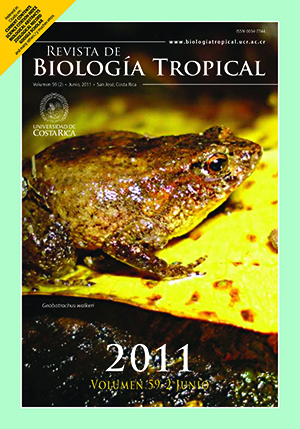Abstract
The uses of biological indicators allow to save time, resources and staff efforts when monitoring programs are conducted. The reef fishes are among the species with biggest potential as indicators since they are conspicuous, easy to identify in the field and have ecological and economical importance. The objective of this study was to evaluate the usefulness of higher taxa to predict fish ecological indices in Cabo Pulmo reef. We generated multiple step-wise regression equations with species abundance data grouped at genera and family levels as factors, and using ecological indices (H ́, J ́, Ƌ*) as dependent variables. To test the efficiency of the models, the expected indexes were compared with those observed in the field during independent test surveys. Results showed that all models were highly significant, and the best fit occurred at genus level to H ́, while those used for Ƌ*, based on family data level, were less precise. The proportion of variables required to apply prediction models of any ecological index never exceeded 41% of the total taxa (genera or families). In conclusion, the use of regression methods to determine higher taxa indicators is adequate and represents a good potential to be used in monitoring programs. In addition, the use of genera and families as indicators provide logistic benefits as training for monitors is less intense and expensive. Finally, the use of expected-observed comparisons to measure the quality of the evalua-tions can be useful for managers in order to interpret and communicate results of the scientific endeavors to the society, so they in turn can participate and help to improve and facilitate long-term monitoring at Cabo Pulmo National Park.
##plugins.facebook.comentarios##

This work is licensed under a Creative Commons Attribution 4.0 International License.
Copyright (c) 2011 Revista de Biología Tropical






